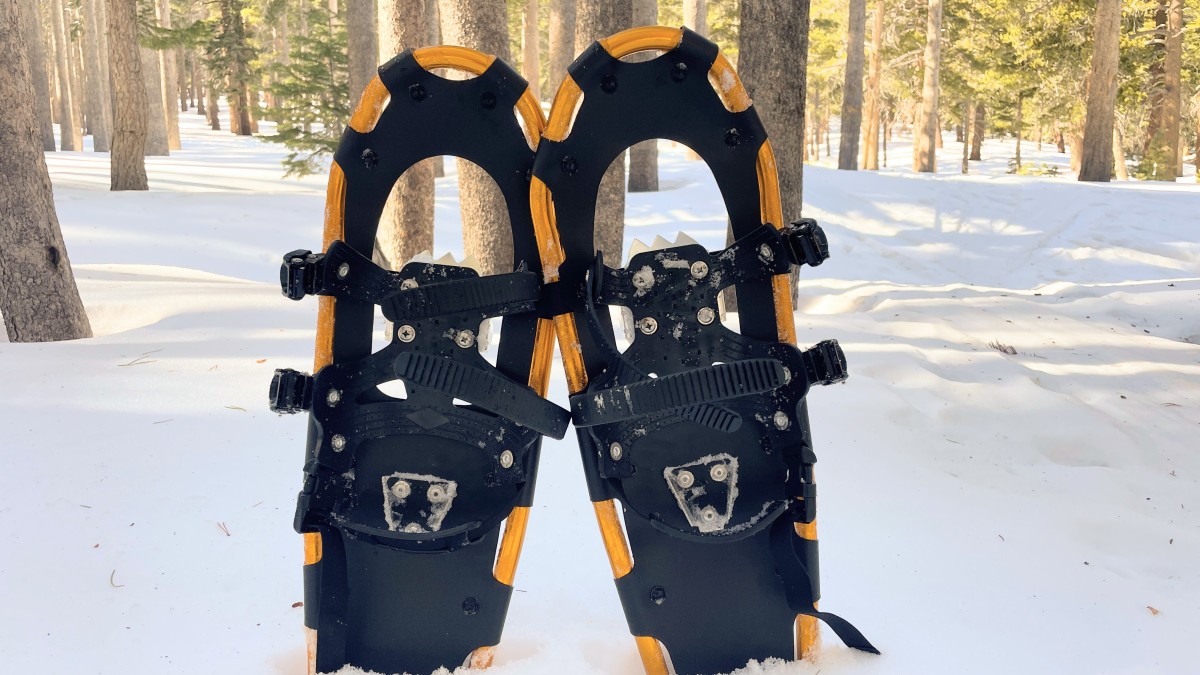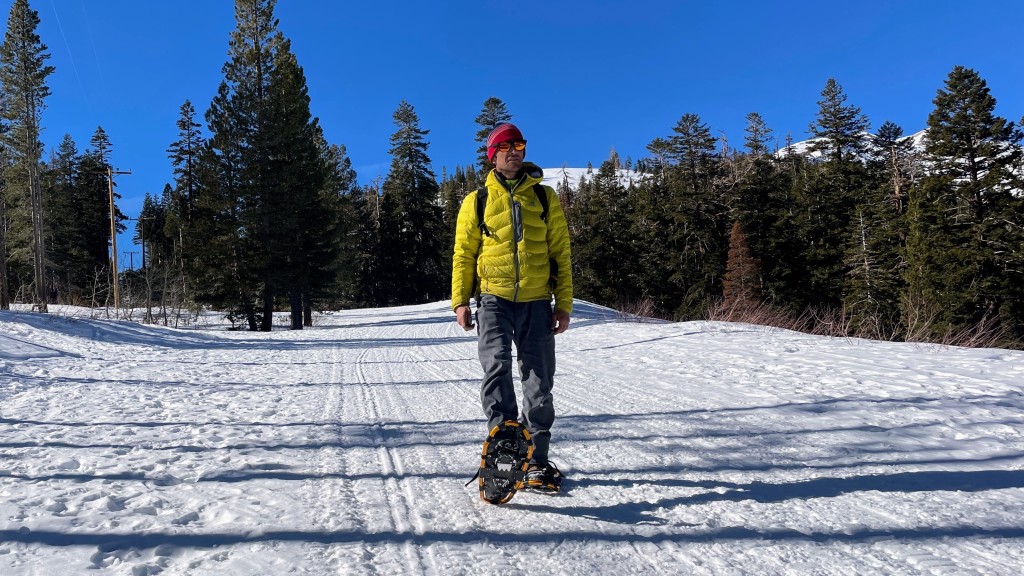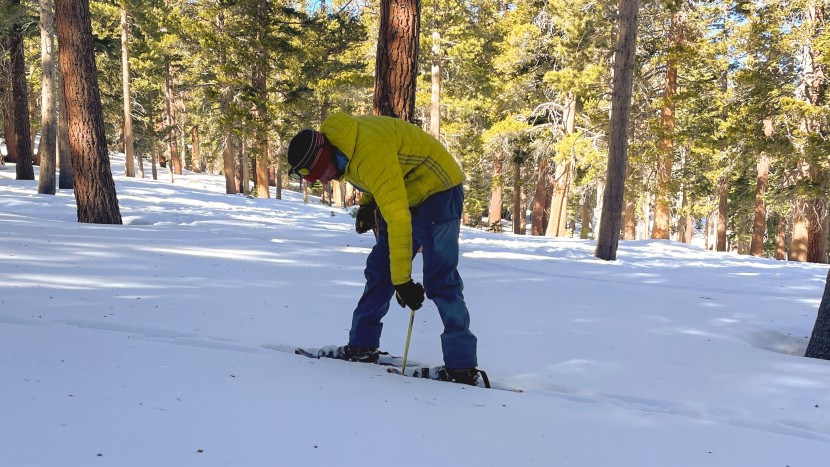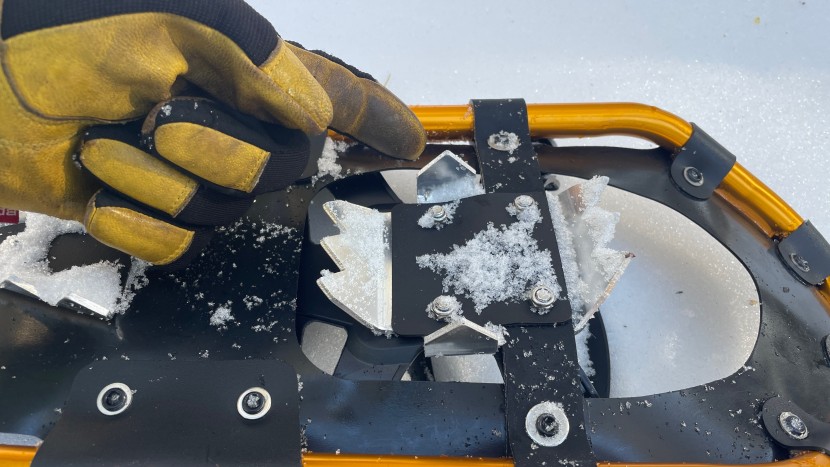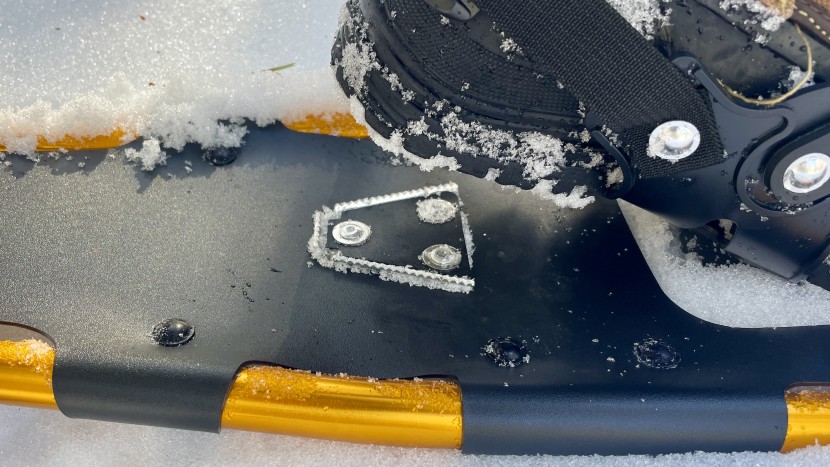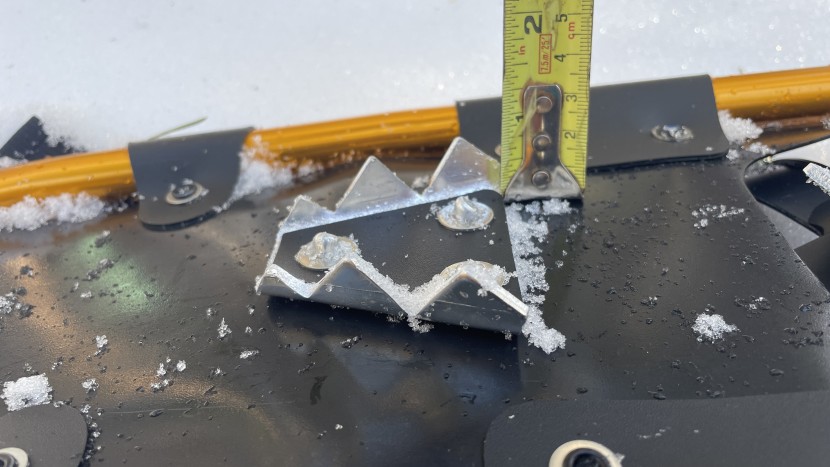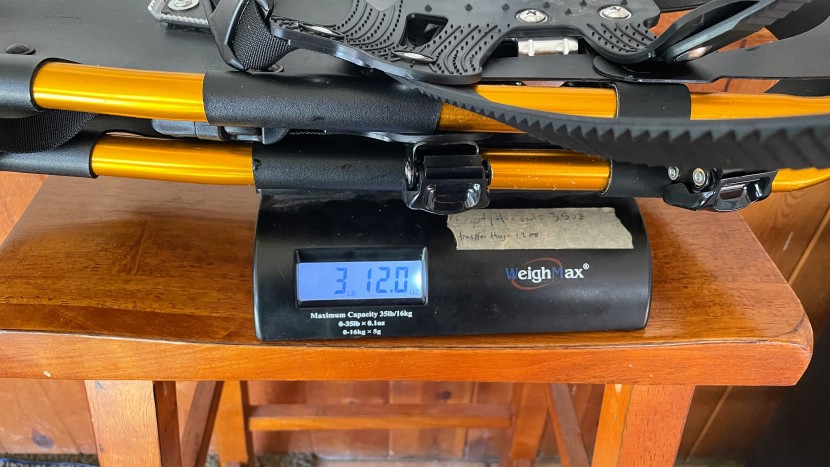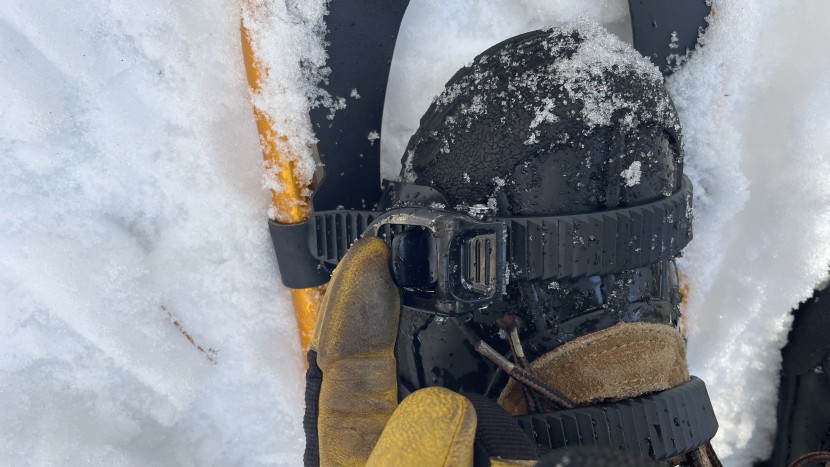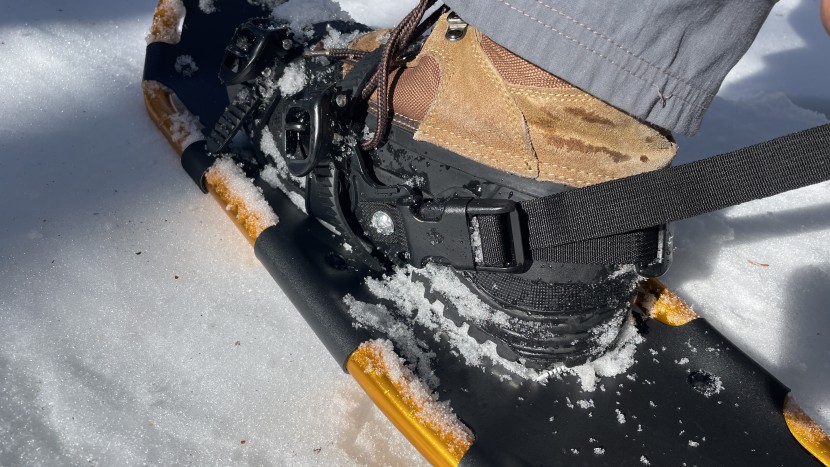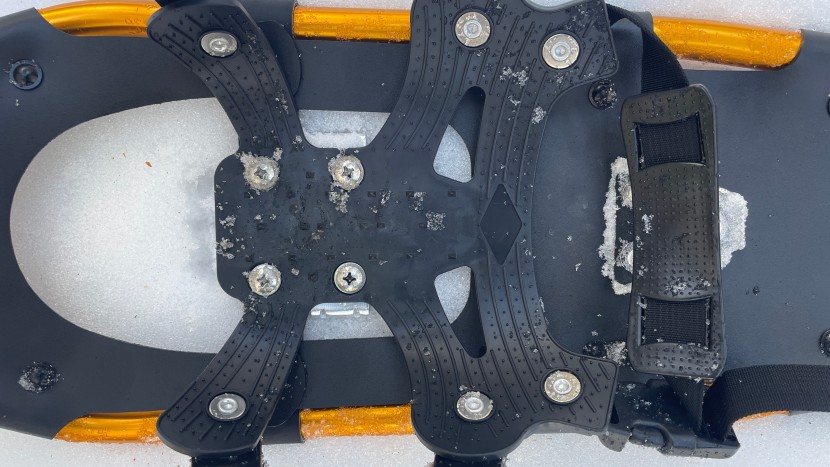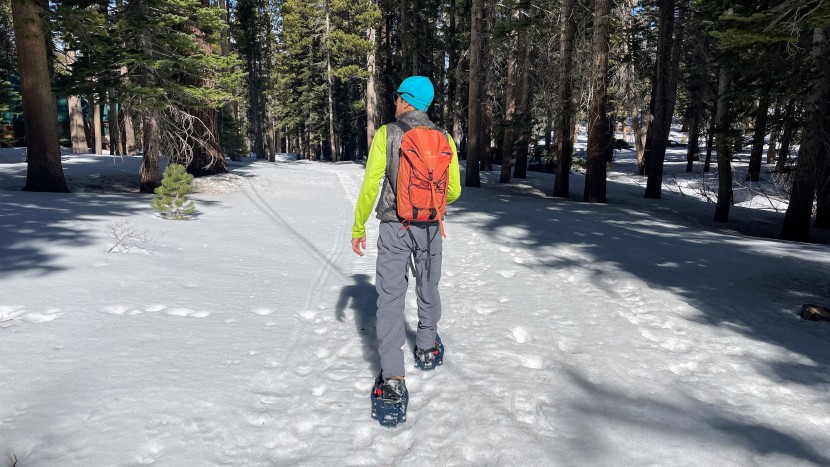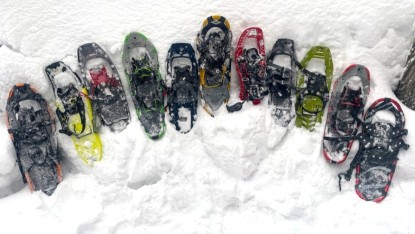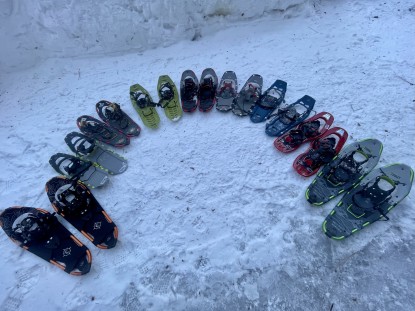Our Verdict
Compare to Similar Products
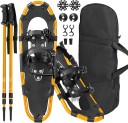 This Product
GoPlus | |||||
|---|---|---|---|---|---|
| Awards | Best on A Tight Budget | Best Overall Snowshoes | High Performance Affordability | ||
| Price | $60 List | $311.96 at Amazon Compare at 3 sellers | $280 List $264.50 at Amazon | $186.93 at REI Compare at 3 sellers | $133.53 at Amazon Compare at 2 sellers |
Overall Score  |
|||||
| Star Rating | |||||
| Bottom Line | While they're nothing special, this inexpensive model gets the job done for the occasional user | Our overall champ combines simplicity and high-quality materials, features, and engineering | This is a top-scoring model with excellent traction and comfort | This average performer will keep most winter hikers happy, but newer designs offer more | This reliable and well-priced snowshoe is versatile and easy to use |
| Rating Categories | GoPlus | MSR Lightning Ascent | Tubbs Flex VRT | Atlas Montane | MSR Evo Trail |
| Flotation (30%) | |||||
| Traction (30%) | |||||
| Walkability (20%) | |||||
| Bindings (20%) | |||||
| Specifications | GoPlus | MSR Lightning Ascent | Tubbs Flex VRT | Atlas Montane | MSR Evo Trail |
| Measured Weight (per pair) | 3.8 lbs | 4.0 lbs | 4.4 lbs | 4.3 lbs | 3.7 lbs |
| Sizes Available | 21", 25", 30" | 22", 25", 30" | 21", 25", 29" | 25", 30", 35" | 22" (one size) |
| Binding System | Ratchet straps with plastic buckles, nylon heel strap | Rubber net and straps with pin-in-hole | BOA and rubber strap | Rubber straps with plastic buckles | Rubber net and straps with pin-in-hole |
| Frame Material | Aluminum | Aluminum | Plastic and steel | Aluminum | Martensitic steel |
| Measured Surface Area | 189 sq in | 188 sq in | 195 sq in | 218 sq in | 183 sq in |
| Measured Dimensions | 25"L x 8"W | 25"L x 8"W | 26"L x 8"W | 27"L x 9"W | 24"L x 8"W |
| Binding/Deck Connection | Strapped | Hinged | Hinged | Strapped | Hinged |
| Crampon/Traction Aids | Aluminum crampons and teeth | Steel crampons, rails, and teeth | Steel crampons and rails | Steel crampons and rails | Steel crampons and rails |
| Deck Material | Polyethylene fabric | TPU coated Nylon | Torsion Deck (plastic) | Nytex nylon | Polypropylene |
| Heel Lift | No | Yes | Yes | Yes | No |
| Flotation Tails Sold Separately | No | Yes | No | No | Yes |
| Men's/Women's Versions Available | Unisex | Yes | Yes | Yes | Unisex |
| Optimum Weight Load (per manufacturer) | 65-155 lbs (size 21") 110-200 lbs (size 25") 150-260 lbs (size 30") |
up to 180 lbs (size 22") 120-220 lbs (size 25") 150-280 lbs (size 30") |
80-160 lbs (size 21") 120-200 lbs (size 25") 190+ lbs (size 29") |
120-200 lbs (size 25") 150-250 lbs (size 30") 180-300+ lbs (size 35") |
up to 180 lbs |
| Tested Size | 25" | 25" | 25" | 25" | 22" |
Our Analysis and Test Results
The GoPlus snowshoes are among a subset of contenders that are inexpensive but get the job done for many hikers. While the snowshoes' performance isn't remarkable, they come with some decent accessories like a basic carrying bag and a pair of trekking poles. Keep scrolling for more details on performance characteristics.
Flotation
This is why you're considering buying snowshoes: you don't want to sink into the snow. Snow varies tremendously in how soft or firm it can be. Sometimes you can walk on top just in boots without leaving a track. Other times, even the biggest snowshoes still leave you hip-deep and swimming.
For our test, the main flotation predictor is the snowshoe's surface area. More surface area equals more flotation and generally easier travel in soft, deep snow. In the case of the GoPlus, the surface area on offer is near the mean for our group of tester models.
Other models with a similar amount of square inches underfoot squeaked ahead in this metric. Over the years we've been testing snowshoes, we've observed that if two models have a similar surface area, the model with a stiffer deck and deck-to-binding connection seemed to perform better. The deck of the GoPlus seems like it's attached to the frame a bit looser than other models. Strapped binding to deck connections often feels sloppier, and at least one tester said, “I found this model feels even a bit more sloppy than the others.”
Traction
While the GoPlus snowshoes scored fairly low for traction compared to the other models in our review, there were some bright spots. The traction teeth under the forefoot are big. They're also oriented for fore-to-aft as well as side-to-side grip.
Traversing (or moving across) steep ground is generally something snowshoes with a tubular frame do not do well. The tubular metal is often the first part in contact with the snow and is fairly slippery. Two big teeth under the front of the GoPlus are oriented to the side. Many other models have teeth in the front at a slight angle, but few have them completely perpendicular to the direction of travel.
The other unique factor for traversing traction is the non-slip metal plate on top of the deck, under the heel of your shoe. With many models, our boots pivot into the fall line while traversing, which means less weight on the heel traction teeth and more slipping. This metal plate keeps that from happening, which makes the small heel traction teeth more effective.
All of the traction teeth on the GoPlus are aluminum, which is softer than the steel in pricier models. Because of this, the teeth must be thicker, limiting penetration in hard snow and ice. In addition, the aluminum teeth dull faster than steel teeth. The same fully strapped binding to deck connection makes for cushy hiking on firm snow but is not precise on technical terrain. That design choice makes sense for a model like this.
Walkability
One of the main things we examine in this metric is how the binding is connected to the deck. It can be a rigid hinge affair, a flexible rubber or fabric strap, or a hybrid. Different connections have different performance characteristics, and those have to make sense for the snowshoes' intended use.
The bindings of GoPlus are attached to the deck with a rubber-coated fabric strap. This strapped connection is more pleasant on groomed trails but feels pretty sloppy when the hiking gets tricky. The strapped connection makes sense when the rest of this model's design characteristics and use case are considered. Keep these on groomed trails or simple off-trail terrai,n and you'll be happy.
Two other factors that can affect this metric are the weight of the snowshoe and its shape. In both of these factors, the GoPlus is unremarkable. Its weight is on the lighter side of our testing group, and while the frame is tapered, that taper isn't particularly pronounced.
The extra “play” in the deck and strapped connection mentioned above in the Flotation metric also detracted from the walkability of the GoPlus. Strapped binding to deck connections often feels sloppier, and our testers said that “this model feels even a bit more sloppy than the others”. Again, it wasn't a big concern on short, mellow hikes on or off trail, but we noticed it the minute things got a little rowdy underfoot.
Bindings
Bindings keep the snowshoe attached to your shoe and are often the most complicated part of the entire product. We need the bindings to be simple, sturdy, and work when we're in a hurry, wearing gloves, and maybe cold and wet!
The GoPlus sports a binding setup that's fairly common in our lower-priced contenders. Your forefoot is held in place by two ratchet straps. These will be familiar to anyone who has ever put on a snowboard. While this type of buckle and strap isn't our testers' favorite, the design is proven. It's easy to get the tension right, and removal is straightforward. “We generally don't find these to be as glove and mitten compatible as the rubber strap found on pricier models”, says our lead tester.
Several less expensive models also have a standard nylon webbing heel strap that closes with a plastic side-squeeze buckle. These nylon straps are more prone to freezing when wet or when temperatures drop to around 32 degrees Fahrenheit. The buckles are also more prone to becoming clogged with snow or ice.
Should You Buy The GoPlus Snowshoes?
The GoPlus snowshoes are not high performers. However, our testers don't think everybody needing snowshoes needs a high-performing pair. These are good enough if you go for the occasional hike with the family on a groomed trail. If you have to take the dog for a walk on a snowy day, these are good choices. If you need something to get up the driveway of your vacation cabin when it hasn't been plowed, toss these in the trunk. Don't buy these if you spend a lot of time on snowshoes or are planning a trip to a wild or remote place.
What Other Snowshoes Should You Consider?
If you're shopping for a good value but also want a pair that performs well, you would be hard-pressed to beat the MSR Evo Trail. They're far from the most expensive, yet they're still among our highest-scoring products. If money is no object and you must have the best performance, look no further than the MSR Lightning Ascent. These are great for all snowy hikes, big and small.


